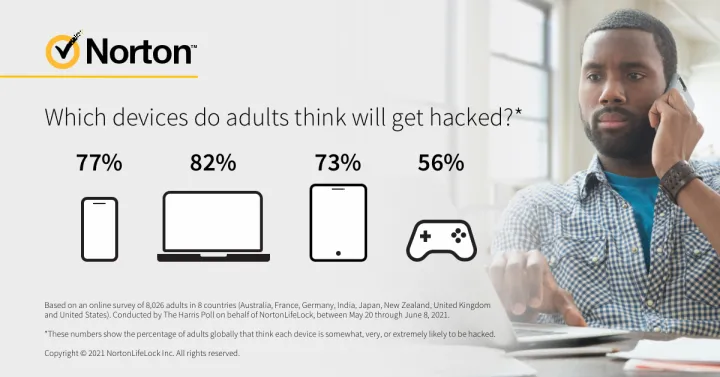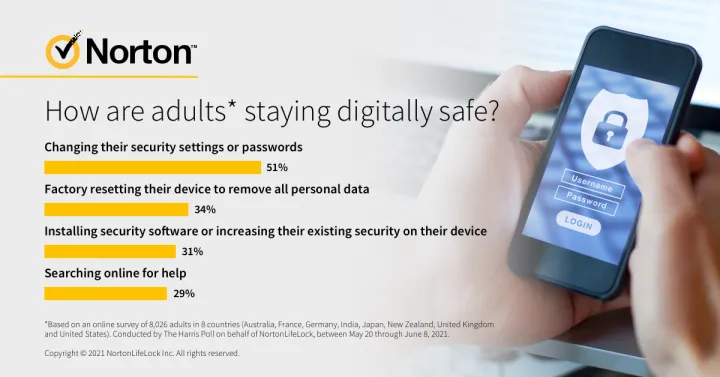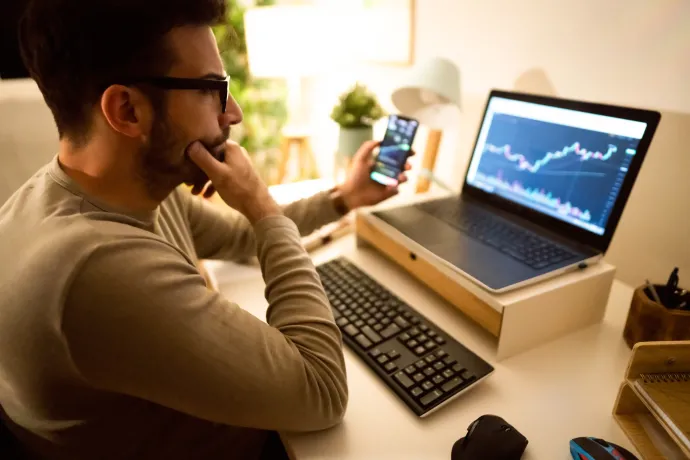The Messy Reality of Screen Time
In a year of unprecedented remote work and learning, how families engage with technology has fundamentally changed.
Parents and kids alike have been adapting, learning and getting creative with how they use technology. New platforms and ways of learning helped kids stay on track in school, while messaging and video apps helped families maintain strong connections and keep loved ones safe. Now, as Americans question whether school and work will ever return to what we previously knew as “normal,” it’s time to evaluate how to embrace the positive impacts of increased screen time while mitigating any risks.
Where we are today
In a survey conducted online by The Harris Poll, we analyzed at-home online behaviors of more than 8,000 adults across eight countries [1]. In the US, we found more than half of Americans (53%) reported the amount of time they spend in front of screens increased significantly during the pandemic with one in three (31%) saying they have become addicted to being online because of the pandemic.

It’s a love and hate relationship
Increased screen time isn’t necessarily bad. One in four (26%) Americans say they have purchased a new smart home or connected device to help them better cope with the pandemic, bringing the average number of devices owned per household to 6. Of those who reported their recreational screen time increased significantly during the pandemic, two in five say it has helped them feel connected (43%) and it has been their way to unwind (39%).
However, families need to ensure that their reliance on technology and connectivity does not interfere with their physical well-being. More than 1 in 3 consumers (38%) say increased screen time has made them less physically active and close to 1 in 4 (23%) say it has made them feel bad about their body or hurt their self-esteem.
The importance of security as it relates to screen time
Additionally, families need to make sure that their online activities are safe, as the majority of adults believe it is at least somewhat likely for a number of connected devices to be hacked.

There are actions being taken globally to better protect themselves online.

However, of those who own connected devices, 1 in 5 (20%) have not taken any action to protect themselves. Of those who have taken steps to secure their devices, no one action appears to be the “go-to,” indicating there’s room for more education around best practices for device security.
Taking control of your online and digital safety
Online security and privacy have unfortunately become something that has to be demanded as a right, rather than being seen as one from the beginning. To better stay in control and be confident in your cyber safety journey, there are three easy steps to get started.
- Educate yourself on password management principles
- Cybercriminals are just waiting for you to give them an opening and if you’re leaving your front door unlocked, it’s probably only a matter of time before someone you don’t know walks right in. Make your passwords unconventional, stay impersonal and keep them complex. Mix, match and change them up across your various online accounts.
- A password manager can also help store all your passwords in an encrypted online vault and autofill your logins when you enter a site. It can also help you to create more secure, complex passwords for your online accounts and tell you if your current passwords are unsafe.
- Beware of phishing scams
- According to the July Consumer Cyber Safety Pulse Report from Norton Labs [2], phishing scams have seen a significant uptick in the last year[3]. Cybercriminals have increasingly been using email or text messages to trick you into giving them your personal information. When in doubt, examine messages closely, do not click on any links or download attachments and never share personal information. Your identity can be one click away.
- Be inherently skeptical
- When we think about the activities we do online, they inherently come with some risk, even as simple as logging into your computer with your password or checking out when you’re online shopping. Always be skeptical and use common sense when accessing websites, downloading an app or getting something for “free.”
At NortonLifeLock, we believe the digital world is only truly empowering when people are confident in their online security. To learn more about the findings, check out our new 2021 Norton Cyber Safety Insights Report (NCSIR): Special Release – Home & Family.
About the 2021 Norton Cyber Safety Insights Report: Special Release – Home & Family
The U.S. research was conducted online by The Harris Poll on behalf of NortonLifeLock among 1,003 adults aged 18+. The survey was conducted May 20 through June 8, 2021. Data are weighted where necessary by age, gender, race/ethnicity, region, education, marital status, household size, and household income to bring them in line with their actual proportions in the population. No estimates of theoretical sampling error can be calculated.
[1] Australia, France, Germany, India, Japan, New Zealand, United Kingdom and United States.
[2] Innovations from Norton Labs are for research, evaluation, and consumer feedback purposes. NortonLifeLock does not give any warranties as to the suitability or usability of these prototypes and recommends safeguarding data and reviewing all terms and conditions before use.
[3] July Consumer Cyber Safety Pulse Report from Norton Labs found 23.69 million phishing attempts blocked between April – June 2021.
Editorial note: Our articles provide educational information for you. NortonLifeLock offerings may not cover or protect against every type of crime, fraud, or threat we write about. Our goal is to increase awareness about cyber safety. Please review complete Terms during enrollment or setup. Remember that no one can prevent all identity theft or cybercrime, and that LifeLock does not monitor all transactions at all businesses.
Copyright © 2021 NortonLifeLock Inc. All rights reserved. NortonLifeLock, the NortonLifeLock Logo, the Checkmark Logo, Norton, LifeLock, and the LockMan Logo are trademarks or registered trademarks of NortonLifeLock Inc. or its affiliates in the United States and other countries. Other names may be trademarks of their respective owners.







We encourage you to share your thoughts on your favorite social platform.